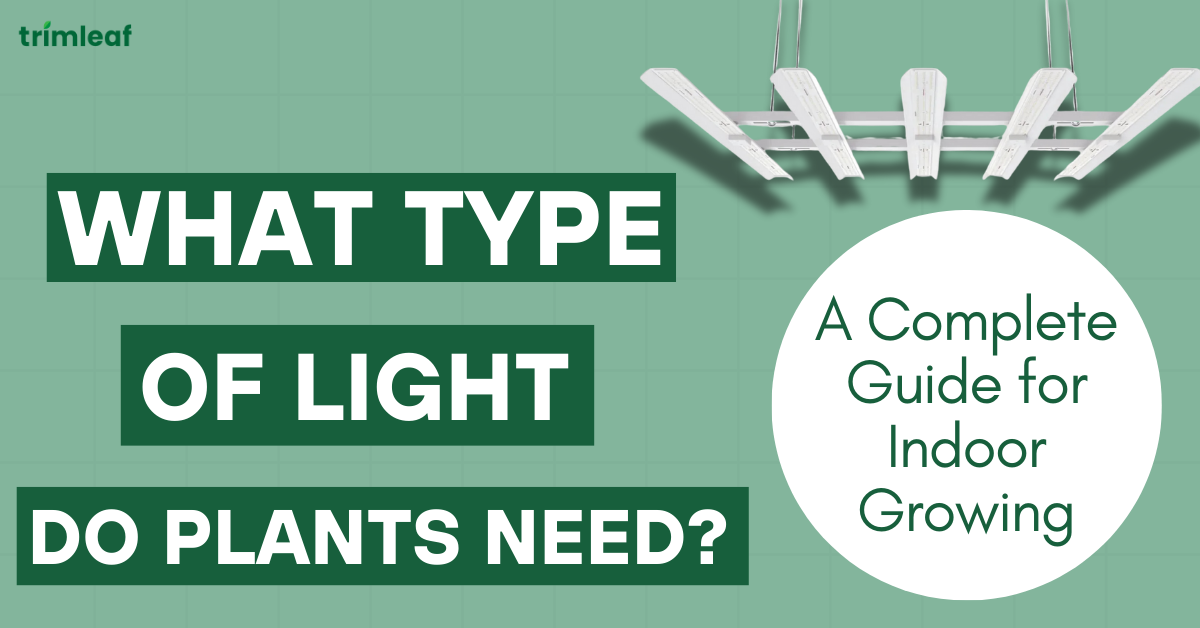
Light is a crucial element essential for plant growth, playing an important role in photosynthesis.
This process allows plants to convert light energy into chemical energy to fuel their growth and development. For anyone growing indoors, it’s vital to understand these light requirements, especially when looking to propagate plants for the long term.
Indoor environments, such as apartments and homes, often present challenges in providing adequate lighting for plants. Many indoor spaces receive only indirect sunlight or feature shaded areas that can hinder plant health.
This is where the distinction between natural and artificial light becomes important. While natural light is the most beneficial source for plants, its availability can vary significantly throughout the day and seasons.
Thus, indoor gardeners turn to artificial lighting solutions to ensure their plants receive the consistent and appropriate light intensity needed for optimal growth.
Table of Contents
Why Light is Important for Plant Growth
Photosynthesis is the process by which plants convert light into chemical energy. During photosynthesis, chlorophyll, or the green pigment in plants, absorbs light energy from the blue and red wavelengths of the light spectrum.
The energy is taken in and converts carbon dioxide from the air and water from the soil into glucose, which plants consider food while releasing oxygen into the air.
When light is insufficient, photosynthesis is affected and can lead to stunted growth and poor plant health. That is why plants need to absorb the right amount of light for their health.
Overview of the Light Spectrum
The light spectrum consists of various wavelengths, each influencing photosynthesis and plant development in certain ways.

- Blue Light (400-500 nm) promotes vegetative growth through root, stem, and leaf development, making this spectrum important in seedling and early stages of plant growth.
- Red Light (600-700 nm) helps flowers and fruits grow, which makes this spectrum ideal in the latter stages of plant growth.
- Ultraviolet (100 - 400 nm), while invisible to the naked eye, supplements red lights in improving flavors and scents of fruits.
You may also encounter the term Full-Spectrum, which is a combination of the different lighting spectrums needed for plant growth. They are the closest when it comes to natural sunlight, and provide a balance between spectrums to ensure healthy growth.
Natural Light vs. Artificial Light
Natural light is often the ideal source for plant growth due to its full spectrum and intensity. However, not everyone has the luxury of having accessible natural light, due to limited outdoor space. That is why grow lights were developed to address the needs of indoor growing.
Now, it’s not easy to say that natural light is the gold standard, as artificial light has its advantages too.
Natural Light
✅ Pros: Provides a full spectrum essential for photosynthesis, promotes natural growth rhythms in plants, and is free and sustainable when positioned well.❎ Cons: Depends on the season and intensity is limited in rooms.
Artificial Light
✅ Pros: Offers optimal light conditions in controlled environments, allowing consistent lighting year-round, with energy-efficient options❎ Cons: Initial investment costs for quality grow lights can be significant and require careful selection and placement to prevent overheating or inadequate light exposure.
Grow Light Types: Which is Best?
If natural lighting is an issue, then using grow lights is a practical solution for growing plants indoors. It’s important to choose the right grow light so that they get sufficient energy required for photosynthesis.
There are three types of grow lights available:

LED grow lights are the most efficient, having low energy consumption while offering lifespans of up to 50,000 hours. They also come in different spectrums to cover each stage of plant growth and even come in full-spectrum options.
Fluorescent Grow LightsFluorescent lights are available in different forms and are ideal for budget-conscious growers looking to grow leaf-only plants, such as herbs. However, they are not as energy efficient compared to LEDs in the long run.
HID Grow LightsHID grow lights are known for their high intensities, which make them ideal for indoor gardens with wide footprints or grow areas. They come available in either vegetation or flowering but can be heat intensive due to the strength of their lights.
How to Choose the Right Grow Light
Before choosing the right grow light that will work best for you, consider other factors. Different plants have varying light requirements that change as they progress through growth stages.
- Assess the space of your indoor garden. If the area is small, you need to grow lights that don’t emit a lot of heat.
- Consider the type of plants you are growing, which would give you an idea if you need, vegetating lights, or a combination with flowering lights.
- Consider also the costs, both upfront and upkeep, as these could be a deciding factor on which grow light will be ideal for you.
Conclusion
Lighting is an important aspect of plant health that can affect growth and harvest quality. Using the right grow light greatly influences the results, which is why it is essential to use the right type of light in plant growth.
If you've decided on what type of grow light you require, feel free to check our LED grow light options, which cover all stages of plant growth. Don’t forget to check our buyer’s guide for the popular options in the market today.
Learn more about LED grow lights here:
- The Best 4x4 LED Grow Lights
- Growing Indoors with LED Grow Lights? Here are 4 Things to Consider
- Go the Distance: How Far Should You Hang Your LED Grow Lights?
- Grow Lights: How Many Watts Per Plant/Square Foot is Needed?
- What You Need to Know About HPS vs. LED Grow Lights
- 5 Reasons to Switch From HPS to LED
Frequently Asked Questions About Type of Lights for Indoor Plants
- What is the role of light in plant growth?
- Grow lights are artificial light sources designed to simulate natural sunlight, providing the necessary light spectrum for plant growth. They emit light in specific wavelengths, primarily blue and red, which are essential for photosynthesis.
- Why is artificial lighting necessary for indoor plants?
- Indoor environments often lack sufficient natural light, especially during winter months or in shaded areas. Artificial lighting, or grow lights, can provide the necessary light intensity and spectrum for optimal plant growth.
- What are the different light spectrums and their effects on plant growth?
- The light spectrum consists of various wavelengths, each influencing photosynthesis and plant development. Blue light promotes vegetative growth, while red light stimulates flowering and fruiting. Ultraviolet light, though invisible to the human eye, can enhance flavor and scent.
- What are the pros and cons of natural light and artificial light for indoor plants?
- Natural light is ideal for plants due to its full spectrum and intensity. However, it can be inconsistent, especially during winter months. Artificial light offers precise control over light intensity and spectrum, but it requires initial investment and careful monitoring.
- What are the different types of grow lights available?
- The three main types of grow lights are LED, fluorescent, and HID (High-Intensity Discharge). LED lights are energy-efficient and long-lasting, while fluorescent lights are affordable but less powerful. HID lights are powerful but generate significant heat.
- How do I choose the right grow light for my plants?
- Consider the plant's light requirements, growth stage, and your budget. LED grow lights are a versatile option for most indoor gardening setups. Also, assess the space and the type of plants you're growing to determine the best light intensity and spectrum.
- How far should I place grow lights from my plants?
- The optimal distance depends on the light intensity and plant stage. Generally, keep the lights 12-24 inches above seedlings and 24-36 inches above mature plants.
- What is the ideal light cycle for plants?
- The ideal light cycle varies depending on the plant's growth stage. Seedlings require 18-24 hours of light per day, vegetative stage plants need 16-18 hours, and flowering stage plants require 12-14 hours.
- How can I prevent heat stress from grow lights?
- To prevent heat stress, use reflective materials, install ventilation fans, monitor temperature and humidity, and consider using a cooling system for intense light setups.
- Can I combine natural and artificial light for my indoor plants?
- Yes, you can supplement natural sunlight with grow lights, but be cautious of sudden light intensity changes.




